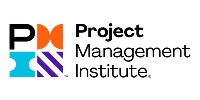A Complexity Framework for Project Management Strategies
Management of complexity is critical to a project’s success. Contemporary projects frequently pose complexities that cannot be adequately tackled by the classical project management tradition. This article offers a diagnostic tool to help identify the type of complexity of a project and determine the most suitable strategy for addressing it. Four project types are each linked to recommended strategies and practices, which apply to three contextual domains.

Method Summary
The theoretical basis is contingency theory, which identifies complexity as a critical factor. The authors have conducted a detailed review of the relevant literature and syncretized relevant knowledge to inform the development of their framework. Two dimensions of complexity—structural and dynamic—are treated as separate variables, each with a binary high/low rating. This produces four types of complexity to be considered, each linked with a corresponding project type.
For each project type, an appropriate strategy is outlined and considered in terms of three complexity domains: project content, internal context, and external environment. When implemented, these strategies will address separate issues relating to the domains.
Key Issues
High structural complexity may be characterized by interdependencies, conflicts, novel activities, and non-trivial problems. High dynamic complexity is associated with fluid goals, attitudes, information, and dependency on other projects.
The four project and complexity types are listed as follows, along with their corresponding
project management strategies:
- Uniform projects (low structural, low dynamic complexity). These are predictable and stable projects where there is a good understanding of what is involved and the resources needed. The projects can be managed using instructionist strategies.
- Pluriform projects (high structural, low dynamic complexity). The scope and aims of the project may be clear, but the structures involved in achieving them are less so and probably of either a technical or sociopolitical nature. The complexities are managed using stakeholder management strategies.
- Unfolding projects (low structural, high dynamic complexity). These may have unclear and emergent goals and purposes, with some lack of specificity about the resources available; hence, they are ideally small in scope to reduce risk. They are managed using learning and experimentation strategies.
- Ambiguous projects (high structural, high dynamic complexity). These have unpredictable outcomes and processes and may be dictated by the internal context and/or external environment. Challenges abound since there is uncertainty everywhere. These projects are strategically managed using symbolic dialogues.
Detailed features of the four different project types are set out in Table 4 in the article. Table 5 in the article (shown below) will be a useful reference point, as it sets out practical applications of the four strategies in relation to the three domains.
Practical Implications
The recommended strategies for the four project types are as follows:
- Instructionist strategies (uniform projects) involve clearly stated goals, plans, and processes; clear communication to staff and stakeholders; strong and decisive top-down management; and a technically competent and well-supported project team.
- Stakeholder management strategies (pluriform projects), for two different complexity types involve:
- (Technical complexities) strong cooperation and coordination; good working conditions; clear constraints; and
- (Sociopolitical complexities) a politically savvy project leader; strong engagement and negotiation with stakeholders; and flexible approaches such as breathers, pilots, and incentives.
- Learning and experimentation strategies (unfolding projects) with participants at all levels can be iterative, allowing for incremental improvements and incorporating feedback from stakeholders; they are supported by flexible planning and agile and Scrum-style strategies.
- Symbolic dialogues (ambiguous projects) involve intensive debate about different possible paths and outcomes, with input from top management and external stakeholders; organizational design is flexible to allow experimentation and pilots.
Overall Takeaway
The complexity framework is an analytical tool used to diagnose the type of complexity of a project and select appropriate strategies and practices to manage it. The diagnostic aspect is summarized in the following grid.
Table 5 in the article lists relevant practices to apply the strategies.
| Complexity Type | Structural = Low | Structural = High | Structural = Low | Structural = High |
| Domain | Dynamic = Low | Dynamic = Low | Dynamic = High | Dynamic = High |
| Content Internal Context External Context | Uniform projects; instructionist strategies | Pluriform projects; stakeholder management strategies | Unfolding projects; learning and experimentation strategies | Ambiguous projects; symbolic dialogues on divergent future states |
Actual strategies can be hybrid, but the framework should assist in tailoring them to complex projects. It may help practitioners avoid mistakes at the outset, steepen the learning curve, and deepen insights during evaluation.
Developments Since the Article Was Published
Following the article’s publications, we adapted and applied the framework for digital business projects. Presently, our focus lies on developing a web-based decision support tool. This tool aims to assist project managers in developing an appropriate project approach by leveraging project data. We intend to share the progress and insights in upcoming publications.
Further Information
For further information on this and similar projects, please contact:
Albert Boonstra, Faculty of Economics and Business, University of Groningen at albert.boonstra@rug.nl
Cees Reezigt, Hanzehogeschool Groningen, University of Applied Sciences at c.reezigt@pl.hanze.nl
For the full article go to https://doi.org/10.1177/87569728221142229



























































































